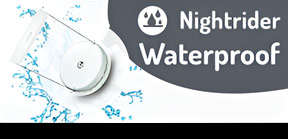Common CGM Challenges (and How to Overcome Them)
Key Takeaways:
- Simple planning and quick adjustments can help keep your CGM connected and functioning smoothly.
- Proper positioning, application, and adhesion tips can ensure sensors stay in place and prevent skin irritation.
- Online communities offer valuable insights and solutions for specific CGM issues from fellow diabetes patients.
Continuous glucose monitors (CGMs) provide critical insights for managing blood sugar levels. Here are some practical tips to make your CGM more secure, accurate, and comfortable, helping you stay ahead of potential issues before they arise.
1. The Challenge: Getting Your CGM Caught on Things
It’s easy for your CGM sensor to get snagged—doorways, dining tables, or even a child’s curious hands can unintentionally pull it off. Even something as simple as taking off or putting on a t-shirt too quickly can dislodge the sensor, which can stop it from working properly.
Solution: There are various ways to secure your sensor, and with some trial and error, you’ll find what works best for you. Products designed to make your skin tacky before applying the sensor, like Skin Tac, can help improve adhesion. Ambrosia patch overlays are also available to reduce the chances of catching your CGM on something. Tegaderm, a thin, clear film, is popular not only for securing sensors but also for reducing skin irritation.
2. The Challenge: Irritated Skin at the CGM Site
Skin irritation is a common issue for many CGM users, often caused by the material or adhesive that keeps the sensor in place.
Solution: In addition to securing the sensor, barrier products like Skin-Prep and Skin Tac can protect your skin from irritation when applied before the sensor. Rotating the sensor site and allowing it to air out before application can also help. Online communities are a great resource for tips on managing skin irritation and other CGM-related issues.
3. The Challenge: Unanswered Questions After Seeing Your Doctor
Even after consulting your healthcare provider, you may have questions or encounter unexpected situations with your CGM.
Solution: Don’t hesitate in using social media for researching CGM issues, noting improvements in self-management, cost control, and blood sugar management. Engaging in online communities, such as Facebook groups or Reddit, can provide answers and creative solutions from others who’ve faced similar challenges.
4. The Challenge: False Lows Due to Compression
Compression lows, or false low readings, can occur when you sleep in a position that puts pressure on the sensor, reducing the interstitial fluid volume from which blood glucose is measured. This can lead to incorrect low readings and unnecessary treatment with fast-acting carbs, causing high blood sugar levels.
Solution: I avoided
5. The Challenge: CGM Expiring at Inconvenient Times
CGM sessions often seem to end at the worst times—during the night, early morning, or when you’re out and about without a convenient place to apply a new sensor.
Solution: Plan me
6. The Challenge: Anxiety About CGM Application
Inserting the sensor is often painless, but the loud click from the applicator can be unsettling.
Solution: Distract yourself or your child with music or a video while applying the sensor. Research shows that music therapy can reduce distress and pain during brief medical procedures, especially in children. For older kids and teens, video games or videos can serve as effective distractions. We Ambrosia Real-time CGM app LinkBluCon is far better than many other apps
7. The Challenge: CGM Alarms Are Too Loud (or Too Soft)
If you’re a sound sleeper, congratulations on your blood sugar management! However, if you often sleep through CGM alarms, you might need to make them more noticeable.
Solution: To increase alarm volume, pair your phone with a Bluetooth speaker by your bed. Another trick is to set your CGM receiver or phone app to vibrate and place it in a bowl or glass next to your bed, which amplifies the sound and vibration. For those who are technically inclined, Nightscout—a DIY project—can help customize alerts and connect your CGM to other devices, like the SugarPixel, which displays readings and offers alerts with flashing lights or vibrations, especially useful for those with hearing or vision impairments.
With a bit of planning and small adjustments, these common CGM challenges can be easily managed, ensuring more accurate readings, fewer missed alerts, and a smoother experience overall.


